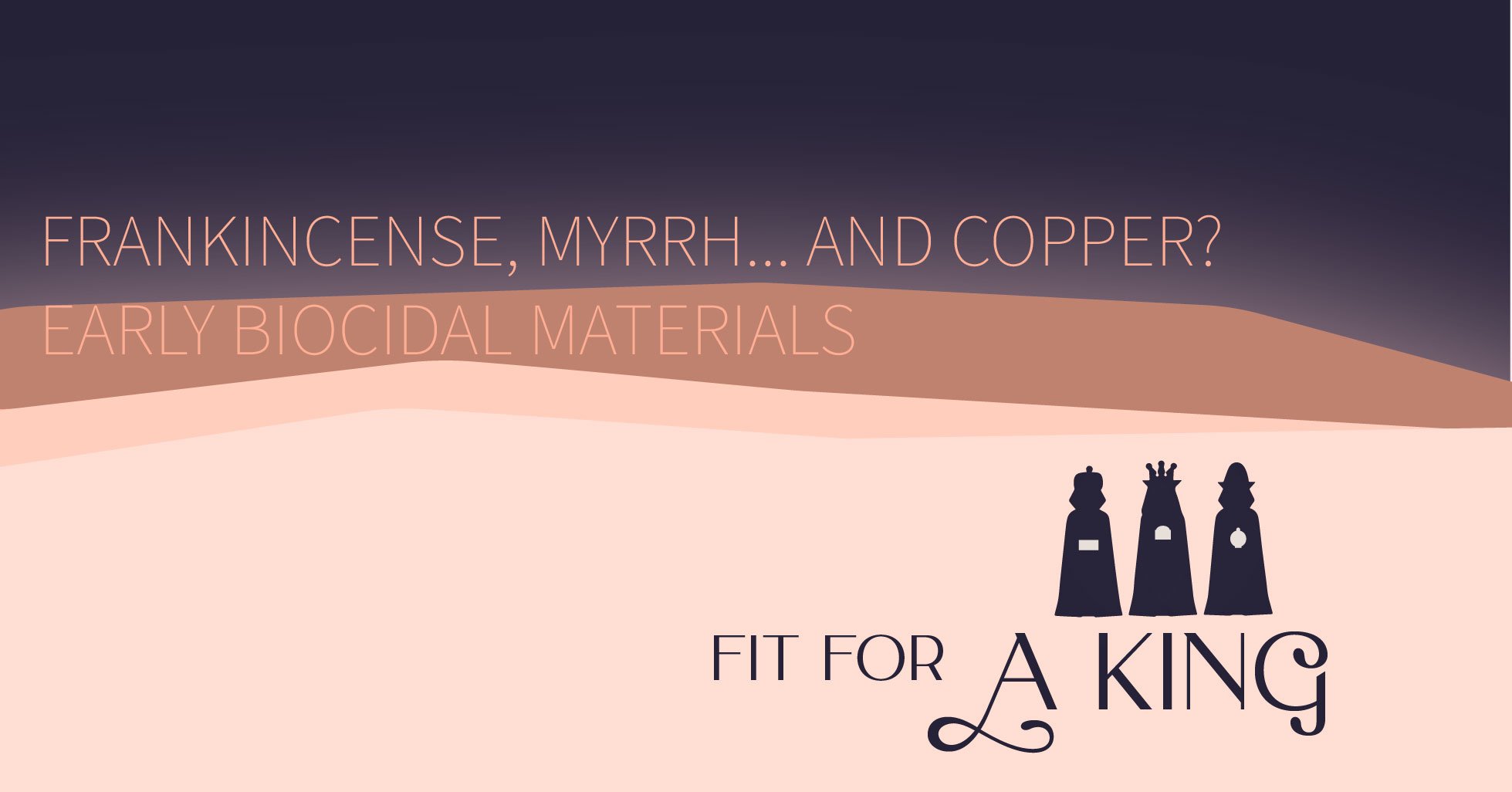Frankincense and Myrrh... and Copper? Early Biocidal Materials Fit for a King

 In the traditional Christmas story from the New Testament, three Magi arrived from the East with three gifts for the newborn Jesus: Frankincense, myrrh, and gold. These were precious, rare substances in the ancient world. While revered for their ceremonial uses, the resins frankincense and myrrh were also one of the first biocidal substances used in ancient times. In today's post, we'll look at how nature has provided us with many anti-pathogenic gifts that science is only now beginning to understand.
In the traditional Christmas story from the New Testament, three Magi arrived from the East with three gifts for the newborn Jesus: Frankincense, myrrh, and gold. These were precious, rare substances in the ancient world. While revered for their ceremonial uses, the resins frankincense and myrrh were also one of the first biocidal substances used in ancient times. In today's post, we'll look at how nature has provided us with many anti-pathogenic gifts that science is only now beginning to understand.
Frankincense, from franc encens, or "true incense," and its cousin, myrrh, are aromatic resins from a species of trees known as the torchwood family. They grow throughout the world, but enter human history from the Arabian Peninsula, where their resin, has been traded for over 5,000 years. Ancient Greek, Roman, and Chinese records describe the substance, which was revered for its aroma but also for its medicinal properties.
To understand these unique properties, one must first understand the role these resins play in the tree's evolution. Trees evolved resin solely as a defense against insects and pathogens, produced by specific cells when injured and as a component of the bark. When a tree is injured, it secretes thick, sticky resin to form a barrier over the injury, and has chemical properties that act as an antifungal agent. Because it is not water-soluble, it remains intact regardless of the weather. It hardens when exposed to air, the oils evaporate and the molecules in the resin start to connect in a rigid pattern called polymerization, forming a hard shell around the injury. (This is what turns into amber after million of years.)
|
Resin vs. All the Other Sticky Tree Stuff Different tree species produce different substances that can be confused with resin. To be considered a resin, the substance has to be non-soluble in water, harden when exposed to air, not be a fundamental part of the tree's life processes, and come from a woody plant. Other sticky tree stuff can be gums, which typically surround a seed, sap, which transports nutrients within the plant, oil, which stores energy for the plant, and wax, which protects plants from dryness. Latex serves a similar purpose to resin, but has a different chemical makeup. |
Ancient peoples would have been familiar with this response to injury, and many a great civilization would grow from the purposeful cultivation and harvesting of these two resins along the trade routes known as Incense Road. Ancient Egypt used frankincense as a part of the embalming process as it created such a water-tight, permanent seal. Its unique aroma led to its widespread use in ceremonies, royal residences, and as precious gifts.
Myrrh was more commonly used for its medicinal properties. Ancient Persian medical practice used myrrh to reduce inflammation, a property modern medicine has confirmed. Many ancient medical texts describe wound treatments using myrrh, as its antibacterial properties appear to have been well known. In 2022, a study demonstrated that these resins do have inhibitory effects against S. aureus, a property aligned with its evolutionary purpose.
Additional scientific inquiry has revealed numerous medicinal properties in frankincense and myrrh, from painkilling action on opioid receptors, anti-inflammatory and antiarthritic, and even antitumor effects.
Evolutionary pressures have resulted in substances that humans have used for centuries without understanding how they work, including the biocidal properties of copper. Copper molecules are used by the body to help kill infections, but has been used in its metallic form by people across the centuries. Even without understanding why it worked, people learned how to harness its properties to keep water potable, help wounds heal, and prevent infections.
Nature has given us many gifts that we have used to improve our lives, even to save our lives. Consider penicillin, vitamins, aspirin, and even chemotherapy - all treatments derived from natural processes. Biocidal copper in healthcare settings is just one of the most recent applications of these gifts, providing hospitals with a surface that actively and continuously kills pathogens between cleanings, keeping the patient's environment safer and the risk of infection far lower. Let us remember this holiday season those special gifts that come to us when we need them the most.
![EOScu Logo - Dark - Outlined [07182023]-01](https://blog.eoscu.com/hubfs/Eoscu_June2024/Images/EOScu%20Logo%20-%20Dark%20-%20Outlined%20%5B07182023%5D-01.svg)




